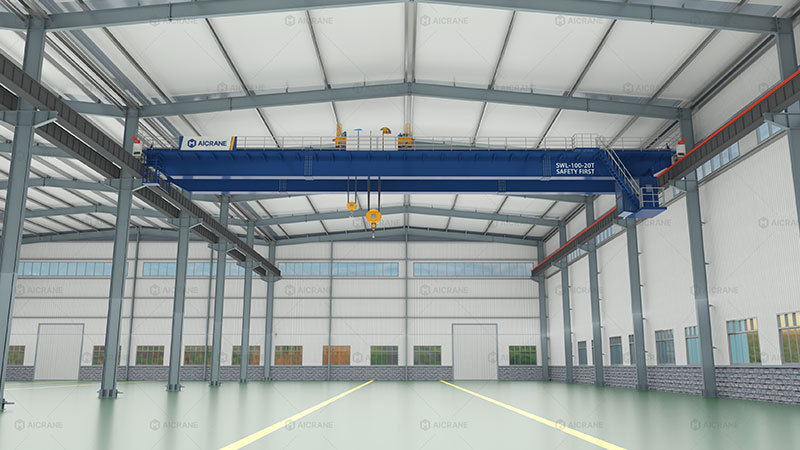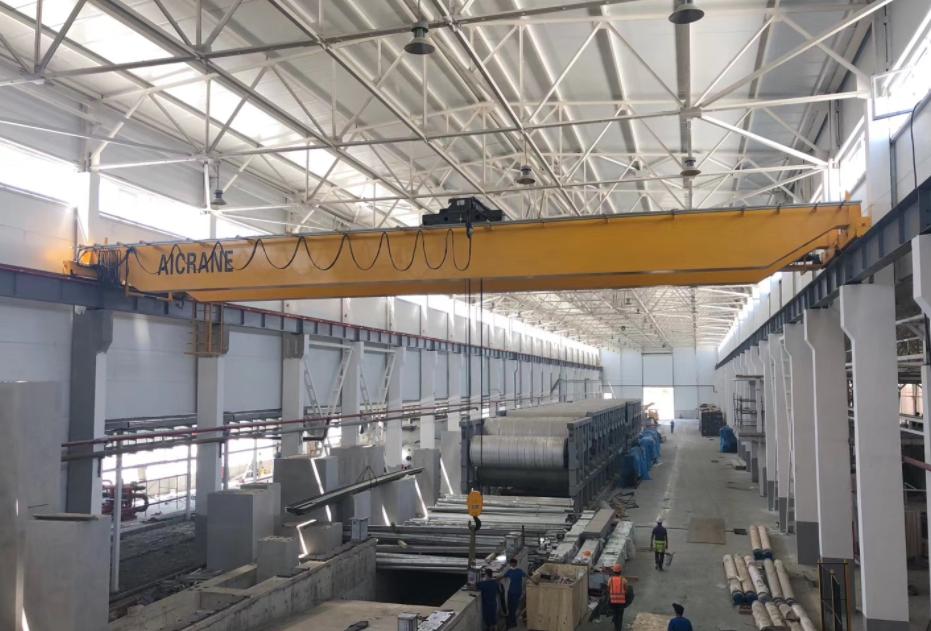Overhead Crane Designing for Quick Installation and Maintenance Accessibility
Overhead cranes are essential in many industrial and manufacturing environments, facilitating the efficient lifting and transportation of heavy loads. However, beyond performance and safety, ease of installation and maintenance accessibility are critical design considerations that impact the total lifecycle cost, downtime, and operational efficiency of crane systems.
Designing an overhead crane with quick installation and simplified maintenance accessibility in mind can significantly reduce project timelines, lower costs, and enhance crane reliability. This article explores the principles, strategies, and best practices involved in designing overhead cranes that are straightforward to install and maintain.

Importance of Quick Installation and Maintenance Accessibility
Minimizing Downtime and Installation Costs
Overhead crane installation often involves complex rigging, structural modifications, and alignment tasks that can be time-consuming and costly. Rapid installation reduces:
- Disruption to ongoing operations or construction.
- Labor and equipment rental costs.
- Risks of errors or damage during prolonged assembly.
Similarly, maintenance is a recurring necessity throughout a crane’s operational life. Easy accessibility to components speeds up inspections, repairs, and replacements, minimizing operational downtime and maximizing productivity.
Enhancing Safety During Installation and Maintenance
Complex or inaccessible crane components increase risks to workers performing installation and maintenance. Designing for accessibility promotes safer work environments, reducing accidents related to cramped spaces, awkward postures, or complicated disassembly.
Design Strategies for Quick Installation
1. Modular and Prefabricated Components
Modular design breaks the eot crane system into prefabricated sections or assemblies that can be manufactured and pre-assembled offsite. This approach offers several advantages:
- Reduced Onsite Assembly: Modules such as girders, end trucks, and trolley assemblies can be lifted and installed in fewer steps.
- Quality Control: Factory assembly ensures better precision, reducing adjustments during installation.
- Faster Project Timelines: Pre-assembly allows parallel manufacturing and site preparation.
Common modular components include:
- Pre-assembled bridge girders with mounted rails.
- Integrated trolley and hoist assemblies.
- End carriages and wheel assemblies pre-mounted on beams.
2. Standardized Connections and Fastening Systems
Using standardized, easy-to-use mechanical connections such as bolted joints with high-precision fittings facilitates quick alignment and fastening during installation. Benefits include:
- Reduced need for welding onsite, which requires special equipment and skilled labor.
- Simplified adjustment and fine-tuning of component positions.
- Ease of disassembly if relocation or modification is required.
High-strength bolts, self-aligning pins, and captive fasteners are examples of features that expedite the assembly process.
3. Lightweight Materials and Optimized Structural Design
Employing high-strength, lightweight materials - such as advanced steel alloys or aluminum in light duty overhead cranes - reduces the weight of crane components. This simplification aids:
- Easier handling and lifting during installation.
- Reduced size and cost of lifting equipment like cranes and hoists needed onsite.
- Safer and more ergonomic installation processes.
Optimized structural design that balances strength and weight also minimizes unnecessary bulk without compromising performance.
4. Clear Installation Guidelines and Documentation
Comprehensive, well-organized installation manuals with clear diagrams, step-by-step instructions, and troubleshooting guides enable installers to perform tasks efficiently and correctly. Including 3D models, videos, and digital checklists can further reduce errors and delays.
Design Principles for Maintenance Accessibility
1. Component Placement and Accessibility
Designing the crane layout to allow unobstructed access to key components is essential for maintenance. Considerations include:
- Hoist and Trolley: Ensure adequate space around the hoist and trolley assemblies for inspection and replacement of parts such as wire ropes, brakes, and motors.
- Control Panels and Electrical Components: Position control cabinets at accessible heights and locations to facilitate diagnostics and wiring work.
- Gearboxes and Motors: Mount these components in ways that allow for removal without disassembling large sections of the crane.
- Lubrication Points: Locate grease fittings, oil reservoirs, and other lubrication points in reachable positions to encourage regular servicing.
2. Use of Access Platforms and Walkways
Incorporating built-in platforms, catwalks, ladders, or safety railings around the crane bridge and runway supports provides safe access for maintenance personnel. Design considerations include:
- Adequate space to carry tools and parts.
- Compliance with occupational safety standards (e.g., OSHA or EN ISO).
- Removable or foldable platforms where space is limited.
3. Standardized and Modular Components for Easy Replacement
Designing components such as motors, brakes, and hoists as modular units that can be quickly swapped reduces repair time. Features include:
- Quick-release couplings.
- Plug-and-play electrical connectors.
- Standardized mounting interfaces.
Modular components also simplify spare parts inventory and training requirements.
4. Integration of Condition Monitoring Systems
Modern cranes increasingly incorporate sensors and IoT-based monitoring to track equipment health parameters like vibration, temperature, and load cycles. Benefits include:
- Early detection of wear or faults, preventing unexpected breakdowns.
- Remote diagnostics that reduce the need for manual inspection.
- Data-driven maintenance scheduling, optimizing labor and parts usage.
Designing the crane to accommodate these sensors and communication devices from the outset facilitates maintenance efficiency.

Balancing Design Trade-offs
Designing for quick installation and maintenance accessibility must be balanced against other factors such as cost, structural performance, and operational requirements. Some challenges include:
- Adding access platforms and walkways may increase the overall weight and cost.
- Modular components may have higher initial manufacturing complexity.
- Lightweight materials could increase material costs or reduce durability if not properly selected.
Effective collaboration between design engineers, installation teams, and maintenance personnel during the early design phase ensures these trade-offs are managed optimally.
Case Study: Quick Installation Design Features in a 20-Ton Double Girder Overhead Crane
Consider a 20-ton double girder overhead crane designed for a heavy manufacturing facility:
- Modular Bridge Girders: Manufactured in two segments with bolted splice connections allowing transport through narrow access doors and quick assembly onsite.
- Pre-mounted Trolley Assemblies: Supplied fully assembled and tested, requiring only mounting on the bridge rails.
- Lightweight End Carriages: Fabricated from high-strength steel reducing crane dead weight by 15%, enabling smaller lifting equipment during installation.
- Built-in Maintenance Platforms: Foldable catwalks along the crane girders provide safe and easy access to hoist components.
- IoT Monitoring: Vibration and temperature sensors embedded in the gearbox enable remote condition monitoring.
This integrated design reduced installation time by 30% and annual maintenance downtime by 25%, significantly improving the facility’s operational efficiency.
Best Practices for Designers
- Engage Early with Stakeholders: Collaborate with installation teams and maintenance engineers during the design phase to understand practical challenges.
- Incorporate Modular Design: Maximize prefabrication and modularization to streamline field assembly.
- Plan for Accessibility: Ensure all critical components can be accessed without removing other major crane parts.
- Use Standard Components: Favor commonly available parts to simplify replacements and reduce inventory costs.
- Integrate Smart Technologies: Design infrastructure to support condition monitoring and remote diagnostics.
- Document Thoroughly: Provide clear installation and maintenance instructions supported by multimedia resources.
- Adhere to Safety Standards: Incorporate OSHA, ISO, and other relevant safety requirements in all design aspects related to access and working platforms.
Conclusion
Overhead cranes are indispensable assets in many industries, but their value depends heavily on how quickly they can be installed and how easily they can be maintained. Designing overhead cranes with these factors in mind not only accelerates project schedules and reduces costs but also enhances operational safety and equipment longevity.
By focusing on modular construction, standardized connections, ergonomic component placement, and integration of modern monitoring systems, designers can deliver crane systems that meet the demanding expectations of today’s industrial environments.
Ultimately, a crane designed for quick installation and easy maintenance is a smart investment that pays dividends through improved uptime, safer working conditions, and lower total lifecycle costs.